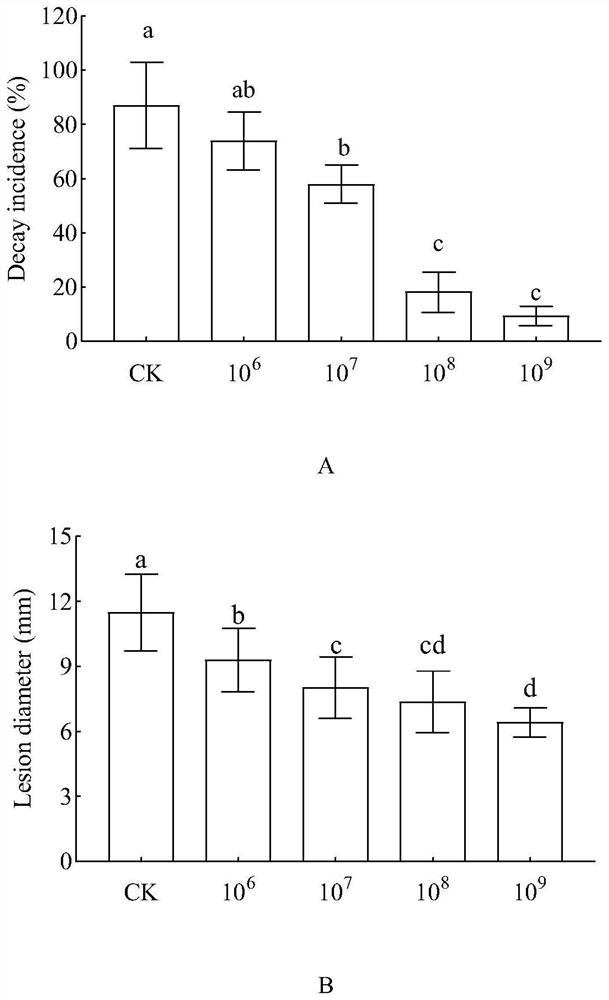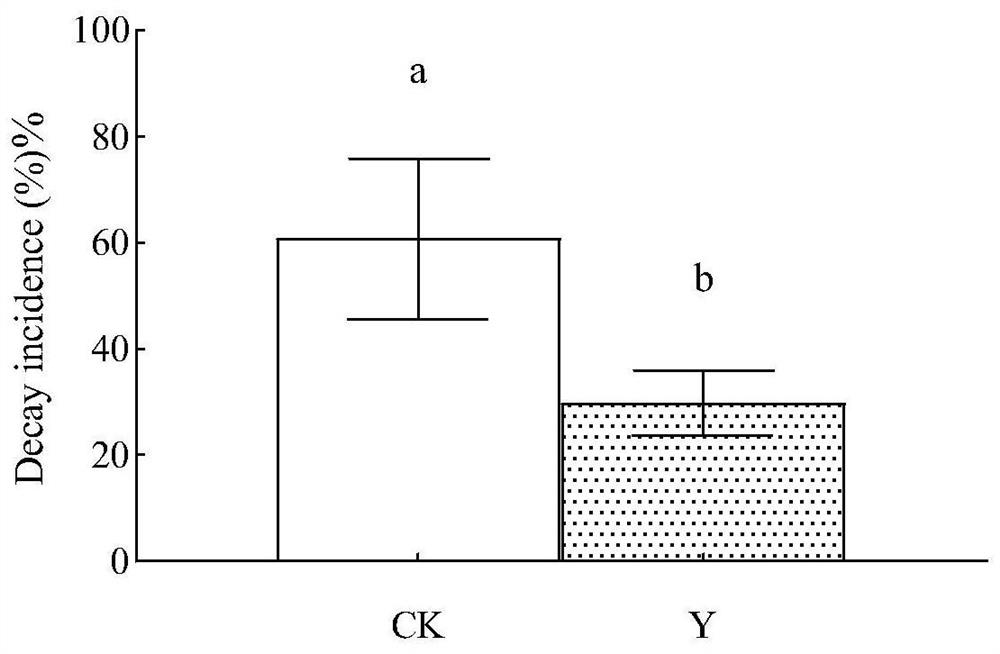Method for postharvest disease control, storage and preservation of cherry tomatoes by using pichia caribbica
A technology for cherry tomato and postharvest disease, which is applied in the field of cherry tomato postharvest disease control and storage and preservation, can solve the problems that the control effect needs to be improved, and achieve the effects of reducing losses, being environmentally friendly, and slowing down quality deterioration
- Summary
- Abstract
- Description
- Claims
- Application Information
AI Technical Summary
Problems solved by technology
Method used
Image
Examples
Embodiment 1
[0033] Pichia calibbica for postharvest black spot control of cherry tomato
[0034] 1. Test plan
[0035] Select cherry tomatoes with no disease, no mechanical damage, uniform color and equal size, rinse the surface impurities with clean water, and then soak them in 0.2% sodium hypochlorite for 3 minutes. Rinse the surface of the cherry tomatoes with running water to remove residual sodium hypochlorite. Place the cleaned cherry tomatoes in a sterilized plastic basket to dry. Make a wound of 3 mm × 3 mm (diameter × depth) on the dried cherry tomato with a sterile puncher at the fruit equator, and inject 10 μL with a concentration of 1 × 10 6 , 1×10 7 , 1×10 8 and 1×10 9 cells / mL of Pichia calibica suspension; after standing for 2 hours, re-inoculate 10 μL on the wound of cherry tomato with a concentration of 1×10 5 spores / mL of Alternaria spore suspension. Cherry tomatoes treated with sterile saline instead of yeast suspension served as the control group. After the tre...
Embodiment 2
[0040] Application of Pichia calibicus in storage and preservation of cherry tomatoes
[0041] 1. Experimental plan
[0042] Select cherry tomatoes with no disease, no mechanical damage, uniform color and similar size, without any disinfection treatment, to maintain the natural state of cherry tomatoes, directly soak the cherry tomatoes in 1.0×10 8 cells / mL of Pichia calibicus suspension. Soak the cherry tomatoes for 3 minutes, remove them, put them in a sterilized plastic basket, seal the plastic basket with plastic wrap after the cherry tomatoes dry naturally, and store them in a constant temperature and humidity incubator at 20°C (90% relative humidity) for 30 days Finally, the incidence of cherry tomatoes was counted, and samples were taken to determine the contents of soluble sugar, titratable acid, vitamin C and soluble solids in cherry tomatoes. Cherry tomatoes soaked in sterile saline were used as blank control. Each treatment was replicated three times with 15 frui...
PUM
 Login to View More
Login to View More Abstract
Description
Claims
Application Information
 Login to View More
Login to View More - R&D
- Intellectual Property
- Life Sciences
- Materials
- Tech Scout
- Unparalleled Data Quality
- Higher Quality Content
- 60% Fewer Hallucinations
Browse by: Latest US Patents, China's latest patents, Technical Efficacy Thesaurus, Application Domain, Technology Topic, Popular Technical Reports.
© 2025 PatSnap. All rights reserved.Legal|Privacy policy|Modern Slavery Act Transparency Statement|Sitemap|About US| Contact US: help@patsnap.com



